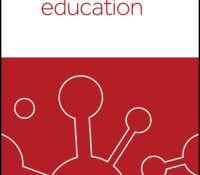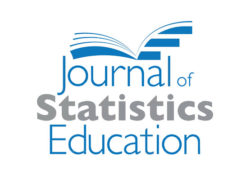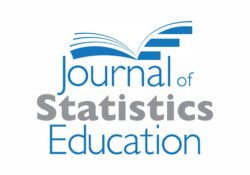tandfonline.com har udgivet en rapport under søgningen “Teacher Education Mathematics”: Abstract Abstract The flipped classroom approach has been gaining substantial momentum and is well received in Asia. Using a qualitative approach, this study examined how the flipped classroom approach affects the teaching and learning experiences of students and teachers in Asian higher education. Five Faculty of Education courses were examined in this study. Five individual interviews were conducted with the course instructors and three focus-group interviews were conducted with a total of 12 students. Data was analysed by thematic analysis. Using the self-determination theory (SDT) as a theoretical framework, five themes emerged. The results of this study suggest that the flipped classroom approach has substantial potential to fulfil the three basic cognitive needs among university students in the field of… Continue Reading →
Like this:
Like Loading...
tandfonline.com har udgivet en rapport under søgningen “Teacher Education Mathematics”: Abstract Abstract The present study examined the extent to which mathematics teachers’ practices reflect visible learning (VL) at their schools and in their technology-enhanced classrooms. A number of determining factors influencing mathematics teachers to practice VL were also investigated. The Visible Learning Scale (VLS) instrument was conceptually developed based on Hattie’s eight mind frames of VL. The survey results from 119 participants indicated that Saudi mathematics teachers expressed a moderate to great level of evidence-based VL practice to enhance and promote students’ learning achievements and progress. The results also showed that the competence level of information and communication technology (ICT) integration is a determining and influential factor that enhances the practices teachers undertake to achieve a better effect on their… Continue Reading →
Like this:
Like Loading...
eric.ed.gov har udgivet: Public Impact’s “Opportunity Culture” (OC) initiative provides a suite of models aimed at extending the reach of highly effective teachers and has partnered with school districts to implement these interventions in schools. Using administrative data from three partner school districts that collectively include 44 OC schools, we estimate the relationship between OC staffing models and student achievement in math and reading. We find that the bulk of exposed students received treatment under OC’s multiclassroom leadership model, in which a master teacher with demonstrated effectiveness intensively leads and coaches a team of teachers, and that these students scored higher in math in all specifications. In reading, while most specifications find positive and significant learning gains for students taught by team teachers, the specification that performs best in our… Continue Reading →
Like this:
Like Loading...

tandfonline.com har udgivet en rapport under søgningen “Teacher Education Mathematics”: ABSTRACT ABSTRACT Virtual laboratory simulations are commercially available to train students; these creative resources are available to complete remotely without traditional time and safety restrictions of laboratory-based practical classes. We introduced a Health and Safety virtual laboratory simulation to a core large first-year science module. Having surveyed students using a combination of Likert-type responses, multiple answer questions and free text responses, students reported that it had increased understanding and knowledge. Additionally, students reported that the laboratory simulation was motivating and had increased confidence for actual practical classes. We also surveyed students one year after completing the simulation finding a similar pattern of responses; the simulation had been useful, increasing confidence and knowledge about Health and Safety. Our data show that… Continue Reading →
Like this:
Like Loading...
eric.ed.gov har udgivet: The low level of mathematics performance of U.S. students in relation to national standards and in international comparisons has concerned educators and policy makers for many years. The authors’ primary goals were to design a feasible and usable intervention and gather data on the promise of the intervention to foster students’ conceptual understanding of whole number concepts and skills and procedural fluency. The FUSION curriculum was developed using an iterative design process aligned with design experiment methodology. The pilot study took place in nine schools in two suburban school districts in the northwest. The FUSION program is a Grade 1 (Tier 2) mathematics intervention that focuses specifically on building students’ early knowledge of whole number concepts. Results indicate that understanding student outcomes, program implementation fidelity, and interventionists’… Continue Reading →
Like this:
Like Loading...
eric.ed.gov har udgivet: The authors’ goal was to evaluate the potential of Math Recovery (MR), a pullout, one-to-one tutoring program that has been designed to increase mathematics achievement among low-performing first graders, thereby closing the school-entry achievement gap and enabling participants to achieve at the level of their higher-performing peers in the regular mathematics classroom. Specifically, the research questions were as follows: (1) Does participation in MR raise the mathematics achievement of low performing first-grade students?; (2) If so, do participating students maintain the gains made in first grade through the end of second grade? The two-year evaluation of Math Recovery was conducted in 20 elementary schools (five urban, ten suburban and five rural), representing five districts in two states. Students were selected for participation at the start of first… Continue Reading →
Like this:
Like Loading...
tandfonline.com har udgivet en rapport under søgningen “Teacher Education Mathematics”: ABSTRACT Formulae display:?Mathematical formulae have been encoded as MathML and are displayed in this HTML version using MathJax in order to improve their display. Uncheck the box to turn MathJax off. This feature requires Javascript. Click on a formula to zoom. ABSTRACT The American Statistical Association’s Symposium on Statistical Inference (SSI) included a session on how editorial practices should change in a universe no longer dominated by null hypothesis significance testing (NHST). The underlying assumptions were first, that NHST is problematic; and second, that editorial practices really should change. The present article is based on my talk in this session, and on these assumptions. Consistent with the spirit of the SSI, my focus is not on what reviewers and editors… Continue Reading →
Like this:
Like Loading...
tandfonline.com har udgivet en rapport under søgningen “Teacher Education Mathematics”: Abstract Formulae display:?Mathematical formulae have been encoded as MathML and are displayed in this HTML version using MathJax in order to improve their display. Uncheck the box to turn MathJax off. This feature requires Javascript. Click on a formula to zoom. Abstract Teaching quantitative methods at the undergraduate level is a difficult yet rewarding endeavor due to the challenges instructors face in presenting the material. One way to bolster student learning is through the use of statistical software packages. Google Sheets is a cloud-based spreadsheet program capable of many basic statistical procedures, which has yet to be evaluated for use in quantitative methods courses. This article contains pros and cons to using Google Sheets in the classroom and provides an… Continue Reading →
Like this:
Like Loading...
eric.ed.gov har udgivet: Are pre-service teachers able to notice their strengths and challenges in teaching? This article reports on a study of pre-service teachers’ teaching performance being simultaneously evaluated by themselves and their professor. Thirty-two pre-service teachers created and planned mathematics lessons approved by their professor to be taught in elementary classrooms. The teaching experience of those teachers was videotaped and evaluated by the professor using the Field Assessment Observation Form in the areas of content knowledge, instruction, assessment, classroom management, and affective skills. Furthermore, the pre-service teachers completed a Self-Reflection answering their professors’ questions regarding their teaching experience. Mixed methods research analyzed the data. The findings of the quantitative data indicate pre-service teachers evaluated themselves higher than what their professor did in assessment and time management. Moreover, the findings… Continue Reading →
Like this:
Like Loading...
tandfonline.com har udgivet en rapport under søgningen “Teacher Education Mathematics”: Abstract Abstract Biostatistics is a critical skill to physicians in an evidence-based medicine era, but teaching basic statistical concepts is challenging. Students often experience anxiety caused by the complexity of statistics and might express negative attitudes toward the subject. We aimed to analyze the effect of an introductory biostatistics course using RStudio on attitude toward statistics and assess its acceptance among medical students. Forty-three 1st-year medical students were included. Pre- and post-course attitudes toward statistics were assessed using the Survey of Attitudes Toward Statistics (SATS-28) scale and technology acceptance was assessed by a Technology Acceptance Model scale at the end of the course. There was a statistically discernible (significant) gain in the scores of three of the four SATS dimensions:… Continue Reading →
Like this:
Like Loading...





